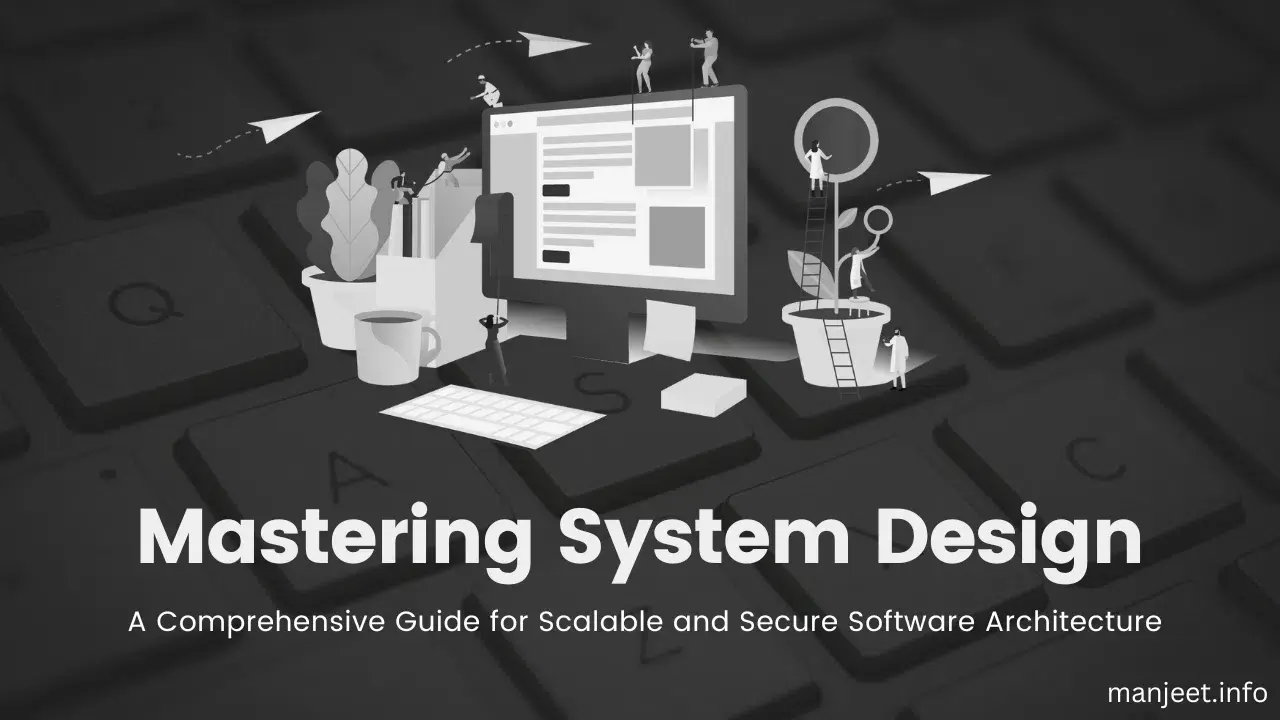With the modern complexities of software development, software developers must have good system design skills when creating applications that we can scale, secure, and that are future-proof. Building the latest billion-user app or a dependable enterprise system, the basics of systems design may mean the difference between disaster and success.
It is a thorough resource covering all system design basics; you will find the architecture patterns, data management, scalability strategies, and security best practices in its pages.
What is System Design?
System design defines a software system's architecture, components, interfaces, and data flow to meet specific requirements. The core goals are:
-
Scalability – Can it handle more users and traffic without breaking?
-
Reliability – Will it work consistently under stress?
-
Maintainability – Is it easy to update and improve over time?
-
Flexibility – Can it adapt to new requirements in the future?
As applications grow more complex, mastering system design is no longer optional—it's essential.
Key Components of a Great System Design
1. Choosing the Right Architecture
Your architecture sets the foundation for how your system operates. Popular approaches include:
-
Monolithic Architecture – A single unified codebase (simple to start but harder to scale).
-
Microservices Architecture – Small, independent services that work together (great for scalability and flexibility).
-
Serverless Architecture – Event-driven, on-demand computing (cost-effective for specific workloads).
Learn more: Microservices vs Monolithic Architecture – 4 Major Comparisons.
2. Smart Data Management
Efficient data design ensures speed and reliability. Key considerations:
-
Database Types – Relational (MySQL, PostgreSQL) vs. NoSQL (MongoDB, Cassandra)
-
Data Modeling – Structuring data for quick retrieval and scalability
-
Indexing & Query Optimization – Minimizing load and improving performance
3. Scalability Strategies
A scalable system can grow without losing performance. Common techniques include:
-
Horizontal Scaling – Adding more machines to share the load
-
Vertical Scaling – Upgrading existing machines for more power
-
Load Balancing – Distributing traffic evenly across servers
-
Partitioning/Sharding – Breaking databases into smaller, faster chunks
4. Building for Security
Security must be part of your design from day one. Key practices:
-
Authentication & Authorization – Use standards like OAuth 2.0 & JWT
-
Encryption – Protect data in transit (TLS) and at rest
-
Input Validation – Prevent SQL Injection, XSS, and other attacks
-
API Security – Implement rate limiting and use secure tokens
The System Design Process
A successful system design project usually follows these steps:
-
Requirements Analysis – Define features, scale, and constraints
-
Prototyping – Build small-scale versions to validate ideas
-
Iterative Development – Continuously refine and optimize
Popular System Design Patterns
-
Load Balancing – For better uptime and performance
-
Caching – Reduce server load and speed up responses (Redis, Memcached)
-
Replication – Duplicate data for high availability and disaster recovery
Real-World Case Studies
-
Netflix – Uses microservices + CDN for streaming to millions
-
Amazon – Implements distributed systems for high availability
-
Instagram – Uses caching & sharding to serve billions of images daily
Essential Tools & Technologies
-
Databases: PostgreSQL, MySQL, MongoDB, Cassandra
-
Caching: Redis, Memcached, Cloudflare
-
Load Balancers: Nginx, AWS ELB
-
Container Orchestration: Kubernetes, Docker
-
Monitoring: Prometheus, Grafana
Future Trends in System Design
-
Serverless Computing – Scaling without managing infrastructure
-
AI & Machine Learning Integration – Intelligent automation and optimization
-
Edge Computing – Bringing computation closer to the user
Final Thoughts
System design is about learning tools and promptly making the correct decisions. Through adherence to the concept of scalability, security, and maintainability, one will be able to develop timeless architectures.
So unlike an architect tackling a massive project, or a software engineer designing activities on how to face system design interviews, the guide will provide you with enough foundation to succeed.
